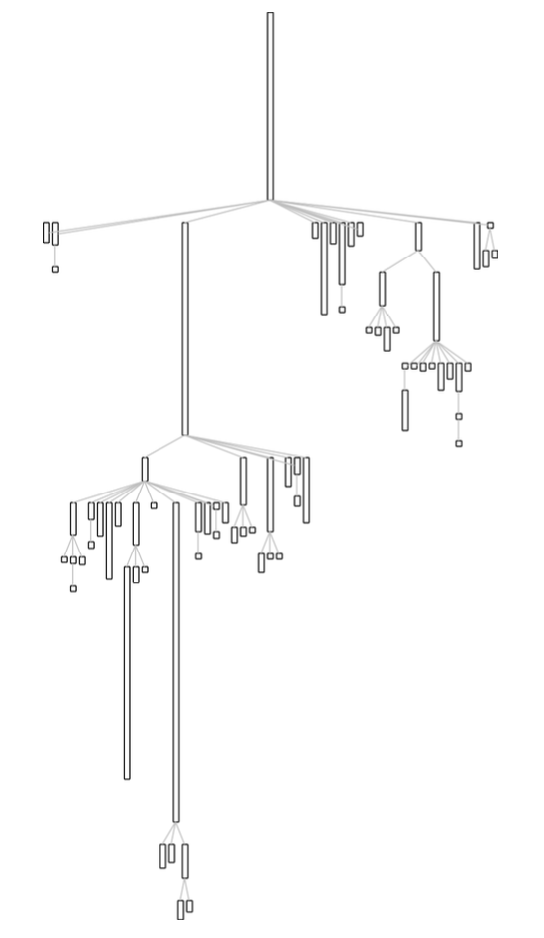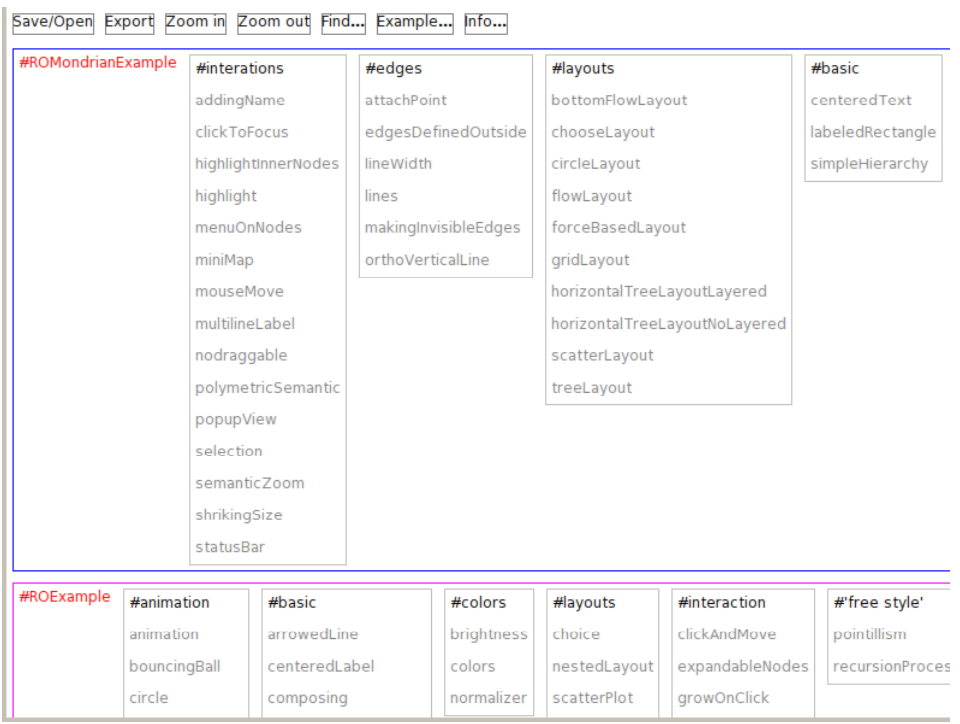10.1: Installation and First Visualization
- Page ID
- 43715
Roassal is part of the Moose distribution1. Nothing has to be installed and you can directly proceed to your first visualization.
Installing Roassal in a fresh Pharo image is easy, thanks to Gofer and Metacello. Just open a workspace and execute:
Gofer new smalltalkhubUser: 'ObjectProfile'
project: 'Roassal';
package: 'ConfigurationOfRoassal';
load.
(Smalltalk at: #ConfigurationOfRoassal) load
Roassal is known to work with the versions 1.4, 2.0, 3.0, and 4.0 of Pharo.
A first visualization.
The first visualization we will show represents the Collection class hierarchy. It defines each class as a box connected with its subclasses. Each box displays the number of methods and number of instance variables of the represented class.
view := ROView new.
classElements := ROElement forCollection:
Collection withAllSubclasses.
classElements
do: [ :c |
c width: c model instVarNames size.
c height: c model methods size.
c + ROBorder.
c @ RODraggable ].
view addAll: classElements.
associations := classElements
collect: [:c |
(c model superclass = Object)
ifFalse: [ (view elementFromModel: c
model superclass) -> c]]
thenSelect: [ :assoc | assoc isNil not ].
edges := ROEdge linesFor: associations.
view addAll: edges.
ROTreeLayout new on: view elements.
view open

How to achieve this visualization will be explained in this chapter. The next chapter details how to create it using the Mondrian domain-specific language (DSL) by using the Mondrian builder, which is part of Roassal.
Roassal Easel
The Roassal easel is a tool to interactively script visualizations. The metaphor used with the easel is to turn the programmer into a painter carrying out the work on an easel: creating, adjusting, erasing are just a few (key) strokes away.
The Roassal easel is accessible from the Pharo World menu. Just look for the R icon2.
The easel is made of two independent windows, the one on the left-hand side renders the script written in the textual window on the right-hand side. By accepting (Cmd-s, Alt-s / right-clicking and pressing accept) in the editor, the visualization will be updated. This is the same keystroke used for accepting a method in the system browser. The advantage of this is to have a short feedback loop. With this, the meaning of your script is always one keystroke away.
The visualization window contains many examples of visualizations, including a step-by-step tutorial. Examples are separated in two categories: ROExample and ROMondrianExample, and are accessible by clicking in the examples button in the upper part of the visualization window.

The ROMondrianExample category includes examples created with Mondrian, a domain specific language built at on top of Roassal. These examples primarily use the ROMondrianViewBuilder class to make a visualization. The ROExample category directly illustrates Roassal.
- http://www.moosetechnology.org/
- Note that a Glamour-based easel is also provided, under the Moose section of the World menu. The Glamour-based Roassal easel is similar to the easel presented here. A dedicated presentation of this version may be found in the moose book, http://themoosebook.org.


